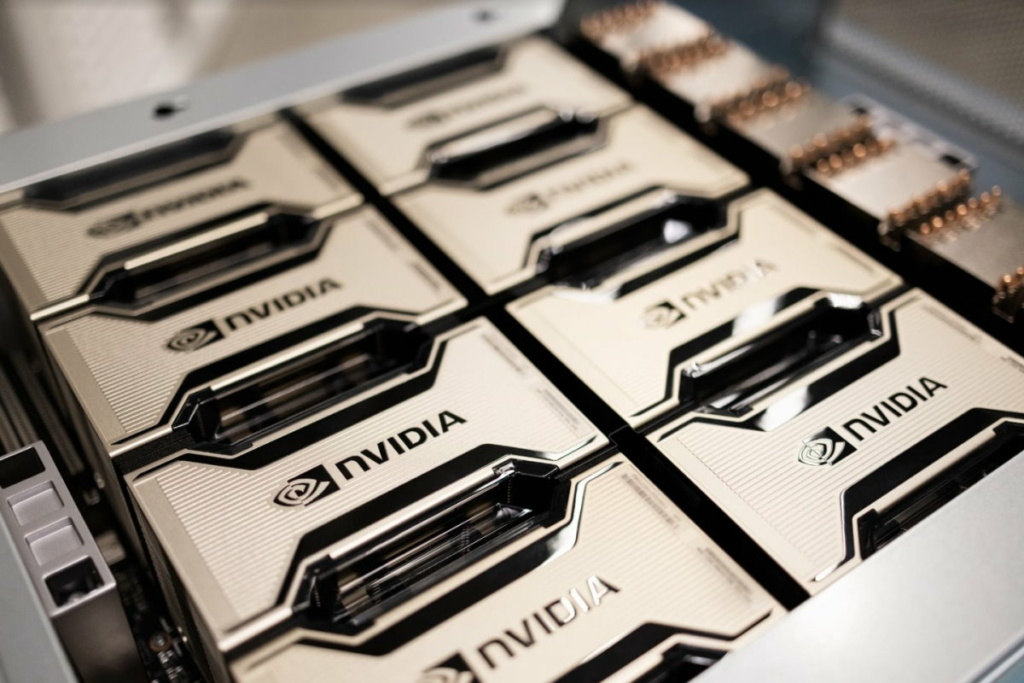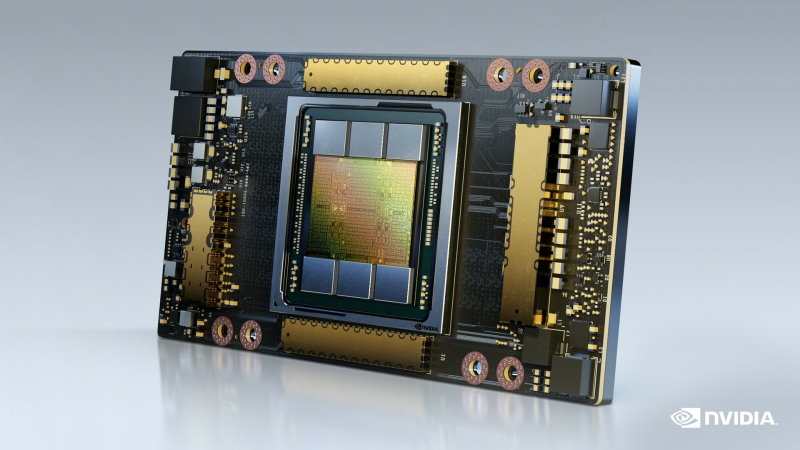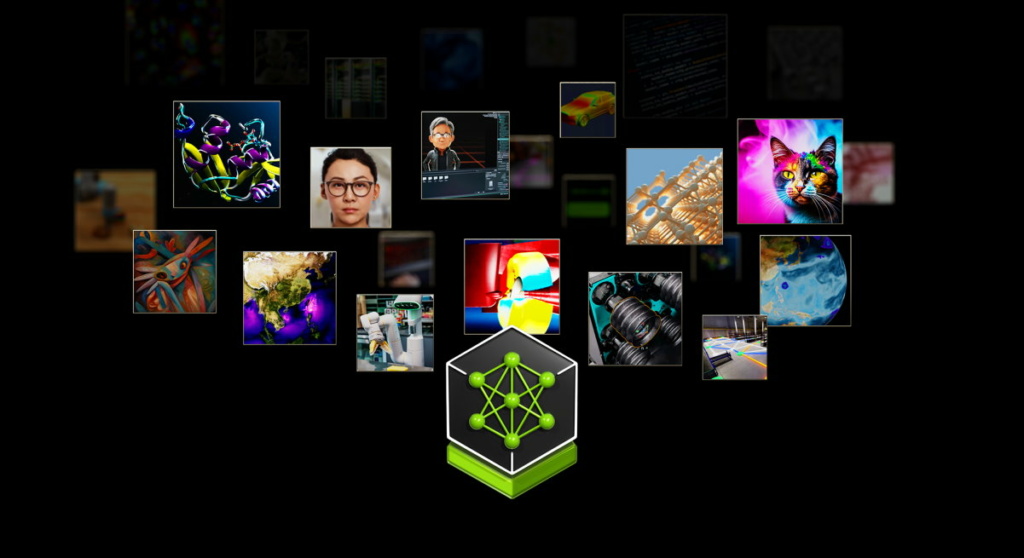Your cart is currently empty!

Nvidia’s perfect storm
Tech transformations always take years longer than suggested by euphoric record share prices, cautions Future Horizons’ Malcolm Penn.
In what can only be described as a ‘right place, right time’ moment, Nvidia’s stratospheric ascent over the past year has rewritten chip market history. The fuse was lit on 30 November 2022, when OpenAI unleashed an early demo of ChatGPT onto an unsuspecting world. Overnight, this chatbot redefined the goalposts of artificial intelligence (AI), proving that machines can indeed ‛learn’ the complexities of human language, interaction, context, nuance and even humor. It quickly went viral on social media, as users shared examples of what it could do, anything from travel planning to writing pop songs and computer code.
In the first five days of its release, the app signed up over one million users and it’s now widely used across a variety of different industries, including customer service (to automate responses to common inquiries), education (creating personalized intelligent tutoring systems), content creation (everything from generating ideas to writing articles), businesses (for generating draft e-mails or writing code), healthcare (clinical decision support, recordkeeping and analyzing medical literature) and entertainment (to generate video game storylines, movie scripts and dialogue).
The ChatGPT demo has also had a profound influence on the evolution of AI. In a deluge of hope, hype and hysteria not seen since the 2000 dot-com boom, AI is up front and center of every firm’s dream. No firm, however, has benefited more from this AI boom than Nvidia. The company’s share price has increased almost 400 percent since the start of 2023 and its market capitalization, at 1.8 trillion dollars, has leapfrogged Alphabet, despite the fact its 2023 net income was greater than Nvidia’s 2023 revenues, to become the third most valuable US company after Microsoft and Apple.
Right now, only a few brave souls dare to bet against Nvidia’s market value rising further, as stock market investors swoon at dreams of an AI-overlord future.

Every firm has its day
Nvidia was founded in April 1993 by three American computer scientists: Jensen Huang (ex-LSI Logic and AMD), Chris Malachowsky (ex-Sun Microsystems) and Curtis Priem (ex-IBM and Sun Microsystems). Given their combined graphics and processor background, the startup’s focus was on the graphics-based computing and video game market.
Over the course of the next decade, Nvidia was able to solidify its position as a formidable gaming console chip supplier with their pioneering graphics processing unit (GPU) technology. The world at that time was dominated by CPUs, with Intel the then market leader and ARM just entering the fray, devices that were the heart of computational-driven tasks.
CPU-driven tasks needed ever faster and more complex processors whereas the GPU’s task was to make movements and animations more realistic and natural. CPU devices were typically serial function structures whereas GPUs capitalized on doing lots of much simpler tasks in parallel, breaking down a single problem, like waving a hand, into several sub-parts and then solving them simultaneously using multiple simple processors.
Its focus on parallel computing technology not only helped Nvidia recover from the dot-com market crash but also helped launch the company’s leading position in the then-remote field of AI. Whether by luck, good fortune or forward-looking vision, the firm’s parallel processing technology was exactly the kind of computational speed and power performance that was needed to develop and run sophisticated AI applications.
In 2006, Nvidia launched its Compute Unified Device Architecture (CUDA) platform, a move that was to eventually prove a major innovation in GPU-based, parallel computing technology. But it wasn’t until 2022 that Nvidia’s investment in AI paid off, once word got out that OpenAI’s ChatGPT platform was using 10,000 Nvidia GPUs. As a result, rival platforms clamored for Nvidia chips, demand quickly far exceeded supply and the price tag for what chips were available skyrocketed, as did Nvidia’s sales. Nvidia’s share price likewise went through the roof as investors clamored to buy the stock.

What next?
With year-to-date stock gains of close to 50 percent, dwarfing the 5 percent S&P 500 index rise, the industry has run out of superlatives to describe the AI chip juggernaut. Part of Nvidia’s appeal is also the euphoria surrounding AI, as firms scramble to identify opportunities to establish their own AI capabilities, either to improve their market position or operate their businesses more efficiently.
However, very few companies, particularly from an enterprise perspective, can realistically say where they want to be for widespread use, a position that’s pre-requisite for AI to demonstrate it’s more than just hype. The future of Nvidia lies in its continued ability to bring innovative hardware and software solutions to market to underpin its current dominant position in GPUs and its potentially transformative impact on AI moving forward. Clearly, the firm is no slouch when it comes to innovation and, equally clearly, it has an impressive lead over its traditional semiconductor competitors.
It takes a minimum of two years to design and bring to market a chip of this complexity so, even if wannabe competitors had started right away, there’s still a further year to wait until the first of the new products show up on the market and a further four to six months in wafer fab before the first production volumes are shipped. Given its first-mover advantage, by that time Nvidia will have released two more enhanced-generation versions of its current roadmap of parts. Playing catch-up with a market leader is never a nice place to be. At best, it’s two steps forward and one and a half steps back.
That said, AMD, Nvidia’s most formidable semiconductor competitor, was already well underway with its ‘go for Nvidia’ strategy, the first fruits of this being its MI300 chip. Launched last December, the 153-billion-transistor chip boasts 192 gigabytes of memory with a memory bandwidth of 5.3 terabytes per second, about 2.0, 2.4 and 1.6 times respectively more than the top-of-the-line H100 AI chip from Nvidia.
Impressive as that may be, Nvidia’s lead in software might be much harder to address. It’s been investing in CUDA since the mid-2000s and AI developers love the way the platform allows them to fine-tune the GPU’s performance. AMD is banking on breaking Nvidia’s stranglehold here by making its competitive ROCM software platform open-source and providing tools to translate CUDA programs into ROCM.
The bigger competitive threat, however, might not be from the likes of AMD but from Nvidia’s high-tech customers. These tech giants, from Alphabet, Amazon, Meta and Microsoft, are all busily designing their own AI accelerator chips, desperate to escape from Nvidia’s dominant market position that’s allowing it to charge sky-high prices and ration chip supply. These chips are also tailor-made for the task in hand, offering even greater performance and cost savings at the end-system level, a practice that has stood Apple in such good stead with its self-designed Iphone chips. Once that transition is made, there’s no recovery, and these OEM customers will never come back.

The only way is down?
At the risk of raining on the parade, we believe there are two areas of risk. First, the current AI hype and potential overinvestment have all of the echoes of the 2000 dot-com boom and bust and now, just as then, no one will believe a bust is coming or foresee what will trigger it. In any event, tech transformations always take years longer than suggested by euphoric record share prices. And, when a tech CEO asks for trillions, not billions, when raising funds for an AI chip project, you know, deep down in your heart of hearts, that the sector may be getting a little bit too hot.
Second, the current market valuation euphoria defies market rationale. According to back-of-the-envelope calculations by tech-focused analysts at Chameleon Capital asset management firm, Nvidia’s valuation implies the company maintains its monopolist-like operating profit margin of 55 percent for the next decade, whilst simultaneously growing sales tenfold, from its current 60 billion dollars level to more than 600 billion dollars. To put that into context, the entire chip industry sold 527 billion dollars in 2023, a figure that’s forecast to grow to 1.4 trillion dollars by 2034.
Granted, Nvidia did achieve this level of growth over the past decade, but that was from a much lower 4 billion dollars level of sales and its current level of profitability is a very recent phenomenon related to the very high prices pushed through in response to overwhelming demand and product shortages. Previous profit levels ranged from 12 to 37 percent, nowhere near the steady 55 percent level needed.
For the good times to keep rolling, the law of large numbers must cease to apply and competition, innovation and pricing pressure won’t come to bear until at least the mid-2030s.
Living legend
Nvidia deserves its well-earned ‘right place, right time’ moment. It has been 30 years in the making and chip industry history thrives on legendary moments like these. In the long run, AI will undoubtedly transform many industries and the way people work, but the road to this end goal is currently shrouded in a fog of euphoric hype and hysteria. AI is also not a product per se, like an Iphone or laptop, and you can’t log into Amazon or Etsy and buy an AI. Arguably, products like ChatGPT are more artificial plagiarism than intelligence.
It is, however, a key enabling technology that will both make current products better and smarter and enable new products that were previously impossible with the then levels of technology. That’s what the chip industry does best and that’s what has driven the past 70 years of growth – but no chip market has ever taken off based on a 40,000-dollar IC.
Main picture credit: Nvidia


